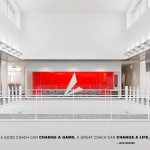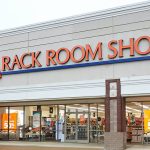Last summer, bike-shop managers across the country heard the same refrain from new customer after new customer: “Gas prices are too high!” The buzz over bike transportation as a low-energy, low-cost, calorie-burning, healthy alternative to cars was building. It was the culmination of several years of trending-and it was just the beginning of a greater movement.
Looking around an American city the past couple of years, many have noticed more cyclists. Between 2006 and 2007, Minneapolis reported a 49% increase in commuters and Pittsburgh reported a 38% increase. In New York last year, commuter cycling grew 35% from 2007. What’s the take-away? Now is an excellent time to tap the burgeoning bike-commuter market.
Using a bike as an alternative mode of transportation may seem like a novel concept to many Americans who want to avoid gashing fuel prices, but the idea is as old as the bicycle itself. For the past 40 years, the bike has been used mostly for sport and recreation (although there was an up-tick in bike commuting during the 1970s oil crisis.) In fact, it really wasn't until about five years ago that Americans en masse began to embrace the bicycle as a means of conveyance once again.
“You've got this ‘perfect storm’ that benefits cycling,” says Eric Bjorling, lifestyle brand manager for Trek. “You've got increasing environmental awareness. You have increasing gas prices and energy costs. You've got increasing health concerns-two-thirds of this country is overweight. There's a growing awareness of these pretty serious health, environment and energy problems, and a bicycle is a really easy solution.”
There is also another cultural factor at play, according to bike-industry insiders – the rise of the track-bike movement. Hipsters in urban areas have embraced single-speed and fixed-gear bikes as paragons of simplicity and utility, and these trendsetters have set in motion a movement toward simple, easy-to-use bikes. For these users, the bicycle isn't simply a useful way of getting from point A to point B – it's also a fashion statement, a political message, an expression of one's individuality, or all of the above.
Whether it's the art student looking for a single-speed, a professional who wants to bike to work to save cash, or the retiree who wants to stay fit by running errands on two wheels, the urban-transport bike market presents an overwhelming number of opportunities for manufacturers and retailers alike.
“About 40% of the trips taken in the Netherlands are taken by bike,” says Brian Foley, cycling category product manager for REI, which has seen double-digit growth in sales of its bike accessories over the last three years. “About one half of one percent is the number in the U.S. You look at that and you go, ‘wow, there's a huge opportunity for growing the business of bikes.’”
The number of Americans who ride bikes is already larger than those who ski, golf, and play tennis combined, according to the National Sporting Goods Association. Over 44 million Americans rode a bike at least once in 2008 – an 11.4% increase from 2007. This makes cycling the fifth-fastest growing sport in the country.
Yet, with such a broad pool of bike riders, it's hard to define the exact demographics of the bike commuter. Most retailers would say it’s generally the student or the professional — a well-educated male between the ages of 25 and 45 — but the market is broadening beyond the confines of the typical ‘suit-on-a-bike’ cliché.
“Think of it more as a ‘psychographic’ that transcends gender and age than a ’demographic,’ says Tim Parr, founder of Swobo, which is a manufacturer of mod urban bikes and apparel. Instead of simply “commuters,” you could think of them as lifestyle or urban cyclists. They use their bikes not only for fun or sport but for transportation, whether it's to and from work or to the movies.
Urban cyclists often share the values a bicycle connotes — environmentalism, design, health, simplicity, and fun, among them — even if their senses of aesthetics and style may differ.
“Our core customer is environmentally-minded,” says Robin Sansom, brand manager for Globe, a new brand of urban bicycles from Specialized that launched in June. “They're often progressive in the way they think. They're often younger — meaning 35 or younger — and they're Internet-savvy. We realize people buy these bikes because they want to identify with them.”
Though urban-bike customers may be hard to define by age or gender, their needs can be pinpointed with some degree of certainty. Whether they’re an athlete with three bikes or a neophyte to the biking world, the transport cyclist is looking for value — and that's not just because of the economy.
A bicycle for transportation needs to be sturdy and durable. It means that value-added features like fenders, racks, chain guards and integrated lights and locks help sell bikes. It also means that sales of accessories and repair services are an opportunity as customers look for ways to improve the old clunkers they unearth from the basement cobwebs.
In a 2008 survey by Bikes Belong Coalition, which is an industry-backed, member-based advocacy organization, 73% of retailers reported an increase in transportation-bike sales and 84% reported an increase in transportation-related accessories sales.
Urban cyclists look for bikes that are simple, easy to use and low-maintenance, which is why single-speeds and fixed-gear bikes, or “fixies,” are growing in popularity. Simply put, the bike needs to get the job done with minimum investment or maintenance, which is why convenience features like step-through designs are helping to sell bikes. Internally-geared hubs and belt-drive bikes are also becoming more popular as more manufacturers embrace these lower-maintenance technologies. While urban utility is important, style also plays a major role in purchases made by urban cyclists.
The style the consumer looks for can vary by age, gender, or geography. Denver, for example, is one of the best old-time cruiser markets, since it's relatively flat and sunny.
While accessories like panniers and headlights usually sell by virtue of their usefulness, a new territory for independent bike dealers and outdoor retailers is selling bags and apparel to the urban cyclist. Much like the surf market, bike style appeals to a demographic far broader than just the enthusiasts. It represents an ethos. Bike commuters aren’t wearing Lycra – they’re wearing messenger bags and backpacks that offer comfort, useful features and style. They’re wearing clothing that is both functional and stylish. Think of tweed jackets with articulated elbows, faux denim skinny jeans or soft-shell knickers.
“These customers tend not to expect these types of duds in bike shops,” says Sheila Moon, founder of the self-named bike-apparel company, Sheila Moon Athletic Apparel. “Whenever they think of bike shops and clothing, they think of spandex,” says Moon, whose customers look for clothing with nice styles but also special features like back zipper pockets and articulated knees as well as special fabrics that wick, have UPF ratings and sport antibacterial treatments.
These customers may always buy their bikes at bike shops, but they'll find their clothing and accessories in a myriad of other shops and specialty retailers, which presents an enormous and largely untapped opportunity for retailers that cater to the active set.
Because the potential market is so broad, manufacturers and retailers have become creative when catering to the transportation cyclist. Most of the large bicycle brands like Trek and Cannondale now feature lines dedicated to urban riders or commuters. In June, Specialized launched Globe, a brand dedicated solely to the urban rider, and in the same month Backcountry.com hopped on the bandwagon by launching Cutter, an urban-bike apparel and accessory line.
“We decided to enter this market because we, like others, have been watching the commuter market grow year over year,” says Stephen Sramek, brand manager for Cutter. “It attracts a wide variety of cyclists and non-cyclists, both entering for different reasons and with different needs.”
Because there is room for different niches, manufacturers take different tacks. Manufacturers aren't just playing with features and styles, though. They're also working on campaigns to get more people interested in bikes. REI, for example, launched a “Bike Your Drive” website, a resource for new cyclists that promotes riding for transportation. Trek sponsors a movement called 1 World 2 Wheels (www.1world2wheels.org), which challenges people to make positive change by driving less and also offers resources for safe riding.
It seems many outdoor and specialty retailers haven't yet harnessed the buying power of urban cyclists, even though their active customers likely ride bikes in addition to their other activities. Many outdoor specialty retailers do not identify the bike commuter as a core customer.
A clerk at one urban-based outdoor store said the shop wasn't involved with bike commuters. When asked if they carried messenger bags, the clerk responded “oh, yes.” Portland, after all, is one of the most bike-friendly communities in the country with a huge community of cyclists. No bike commuters in an outdoor store in downtown Portland? Someone is missing a big opportunity.
Independent bike dealers, however, have noticed and started to capitalize on the burgeoning trend. Urban bike shops are some of the most active shops that are utilizing creative marketing tactics to appeal to this large pool of potential customers.
Wheelworks, a series of three shops in the Boston area, sets up booths with stylish commuter bikes at health fairs, where they extol the healthy virtues of riding about town. They also sponsor one-day commuting events in which a group of cyclists caravan from a store to downtown Boston where Wheelworks holds a bike expo for attendees and passersby.
Salvagetti, a bike shop in downtown Denver, has implemented other creative ways of catering to the commuters and lifestyle-bike crowd, which comprise as much as 40% of their sales.
“We try to be one of the friendlier shops in town,” says manager Joe Hanrahan. “When people come in and tell us they don't know anything about bikes, it's an opportunity to make them a cyclist. It's a philosophy of our store.” In short, everyone can learn to love these two-wheeled contraptions.
Salvagetti maintains a blog to alert customers not only to store happenings but also bike-world news and entertaining YouTube videos. The shop also holds monthly breakfast rides, in which a group of cyclists — cruisers, mountain bikes, recumbents, and tandems alike — pedals leisurely from the shop to a local breakfast joint on a weekend morning. The goal is to introduce locals to the bike lifestyle and arguably the most salable perk of bicycle riding: fun.
In the end, the aim of manufacturers and retailers is not only to serve their own customers with innovative products, but also to spread the good gospel of the bicycle in general. “Our main goal is to get more people on bikes,” says Tim Parr of Swobo, “and however we do that, the whole world wins.”
Editor’s Note: See more on Bike Commuting in the latest issue of SGB…














